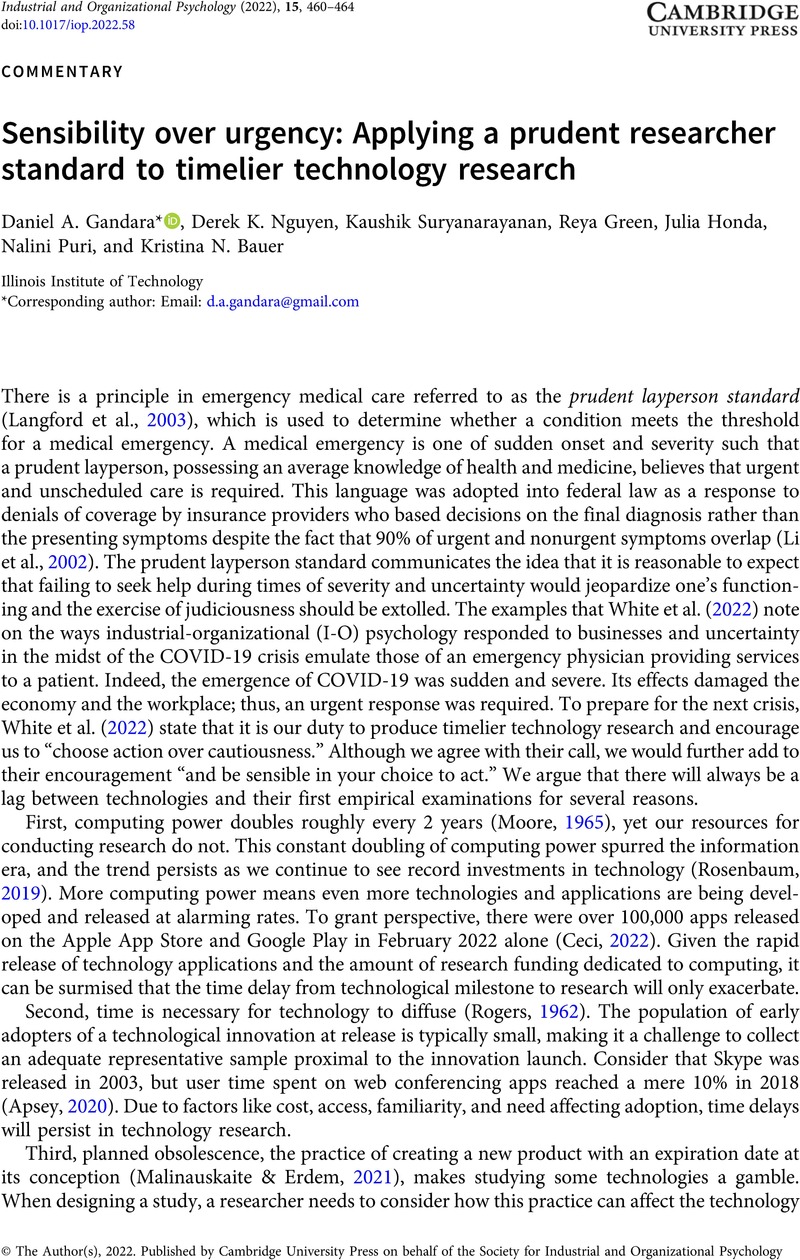No CrossRef data available.
Article contents
Sensibility over urgency: Applying a prudent researcher standard to timelier technology research
Published online by Cambridge University Press: 09 September 2022
Abstract
An abstract is not available for this content so a preview has been provided. Please use the Get access link above for information on how to access this content.

- Type
- Commentaries
- Information
- Copyright
- © The Author(s), 2022. Published by Cambridge University Press on behalf of the Society for Industrial and Organizational Psychology
References
Apsey, E. (2020, November 12). Powering video conferencing and productivity tools with NVIDIA vPC. NVIDIA Developer Technical Blog. https://developer.nvidia.com/blog/powering-video-conferencing-and-productivity-tools-with-nvidia-vpc/
Google Scholar
Ceci, L. (2022). Number of monthly Google Play app releases worldwide 2019-2022 [Graphic data]. Statista. https://www.statista.com/statistics/1020956/android-app-releases-worldwide/
Google Scholar
Hoole, E. J., & Martineau, J. W. (2014). Evaluation methods. In Day, D. (Ed.), The Oxford handbook of leadership and organizations (pp. 167–196). Oxford University Press. https://doi.org/10.1093/oxfordhb/9780199755615.001.0001
Google Scholar
Langford, M. I., Bearie, B. J., Kazzi, A. A., Blasko, B., & Kohl, A. (2003). Patients’ vs. physicians’ assessments of emergencies: The prudent layperson standard. California Journal of Emergency Medicine, 4(4), 75–81. https://www.ncbi.nlm.nih.gov/pmc/articles/PMC2906958/
Google Scholar
Li, J., Galvin, H. K., & Johnson, S. C. (2002). The “prudent layperson” definition of an emergency medical condition. American Journal of Emergency Medicine, 20(1), 10–13. https://doi.org/10.1053/ajem.2002.30108
Google Scholar
Malinauskaite, J., & Erdem, F. B. (2021). Planned obsolescence in the context of a holistic legal sphere and the circular economy. Oxford Journal of Legal Studies, 41(3), 719–749. https://doi.org/10.1093/ojls/gqaa061
CrossRefGoogle ScholarPubMed
Moore, G. E. (1965). Cramming more components onto integrated circuits. Electronics, 38(8), 114–117.Google Scholar
Rosenbaum, E. (2019, April 8). Tech spending will near $4 trillion this year. Here’s where all the money is going and why. CNBC. https://www.cnbc.com/2019/04/08/4-trillion-in-tech-spending-in-2019-heres-where-the-money-is-going.html
Google Scholar
White, J. C., Ravid, D. M., Siderits, I. O., & Behrend, T. S. (2022). An urgent call for I-O psychologists to produce timelier technology research. Industrial and Organizational Psychology: Perspectives on Science and Practice, 15(3), 441–459.Google Scholar




